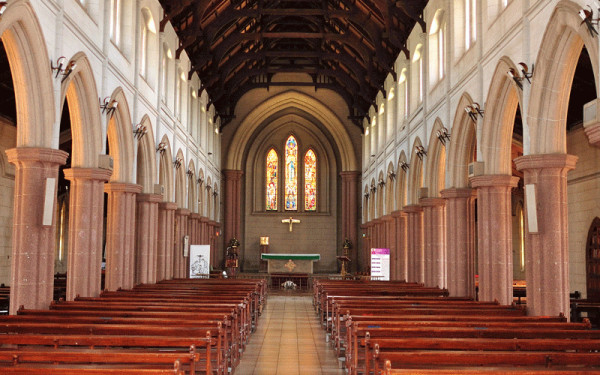
Harare, Zimbabwe, Oct 20, 2020 / 03:01 pm (CNA).- In a statement announcing directives to guide the expansion of public worship in Zimbabwe last week, the nation’s bishops encouraged the people of God to attend Mass.
“We now discourage live-streaming of Holy Masses and other relevant pastoral programmes except for the spiritual nourishment of the faithful who may be physically impeded in attending Holy Mass,” the members of the Zimbabwe Catholic Bishops’ Conference said in their Oct. 12 statement “The Joy of Coming Together for Public Worship”.
They added that Catholics have “the obligation to attend Holy Mass if there is no major reason to absent oneself”, and emphasized that “physical attendance together is more rewarding than live-streaming.”
Public worship resumed in Zimbabwe in June under a revised guidance that allowed a 50-person congregation after President Emmerson Mnangagwa eased COVID-19 restrictions that had been in place since March.
In September, the number of worshippers was revised upward to 100.
In their Oct. 12 statement, the bishops recalled some of the guidelines issued when public Masses resumed in June, saying, “Holy communion must only be received on the hand… the reception of the blood of Christ by concelebrants and members of the congregation remains suspended.”
“The sign of peace during Mass is also suspended,” the members of the ZCBC added.
The bishops also said that all Church gatherings must be conducted “while adhering to the stipulated numbers given by the government.”
In places of worship where appropriate distancing may not be possible, the faithful must be encouraged to congregate in an open space, the bishops said.
Zimbabwe’s bishops also directed that Confirmations and Ordinations are permissible. Meetings of parish councils, associations, and catechumens have also been allowed at the parish and deanery levels.
However, diocesan meetings and national congresses remain suspended until the situation in the country normalizes.
“We need to be ever conscious of the threat of COVID-19 and take all the necessary precautions, as directed by the local Parish Council, medical personnel, Ministry of Health and WHO,” they said.
The bishops expressed their gratitude to God that “the impact of the pandemic was not as harsh in Zimbabwe as in other parts of the world.”
The country has had 8,159 confirmed cases of Covid-19, with 232 deaths.
“We pledge our pastoral closeness and joint prayers through the intercession of the Blessed Virgin Mary, for the victims of COVID-19,” the members of the ZCBC concluded.
If you value the news and views Catholic World Report provides, please consider donating to support our efforts. Your contribution will help us continue to make CWR available to all readers worldwide for free, without a subscription. Thank you for your generosity!
Click here for more information on donating to CWR. Click here to sign up for our newsletter.



Leave a Reply